Physics > QUESTIONS & ANSWERS > Phys421 magnetic Fields _University of California, Berkeley. Homework 27 -Solutions (All)
Phys421 magnetic Fields _University of California, Berkeley. Homework 27 -Solutions
Document Content and Description Below
Phys421 magnetic Fields _University of California, Berkeley. Homework 27 -Solutions Phys421 Homework—Ch 27 1 1)d) 0 (sum of other three answers, since abc def 0 ) 8) ~10... 0 N, west 9)c) 14 m/s 10)b) 13 evr d) 7.54 10 7 11)b) 9 N, up 12)a)i) 0 iii) 1.26 10 N m ⋅3 , +y-direction ms 1) The magnetic field in the region shown is 0.385 T, and it points in the +xdirection. a) What is the magnetic flux through the surface abcd? b) What is the magnetic flux through the surface befc? c) What is the magnetic flux through the surface aefd? d) What is the magnetic flux through the entire closed surface? Phys421 Homework—Ch 27 3 KEY KEY KEY KEY 2) Is it possible for a charged particle to move through a magnetic field without experiencing a magnetic force? Explain why or why not. 3) Explain how it is that a magnetic force does zero work on a charged particle, but still affects the particle’s velocity. 4) In the circuit shown, the current passes through the rectangular strip. An external magnetic field is passing through the strip; the field is directed out of and perpendicular to the page. If the charge carriers are negative, which side of the strip has a higher potential: a or b? Thoroughly explain your reasoning. a b Phys421 Homework—Ch 27 4 KEY KEY KEY KEY 5) A neutrally charged metallic bar has been moving to the right for a long time in a uniform magnetic field that points out of the page as shown. a) The magnetic field exerts forces on the moving charges. Which end of the bar is positively charged? Negatively charged? Explain your reasoning. b) What is the direction of the electric field inside the bar? Explain your reasoning. c) Is there any current in the bar while it moves at constant velocity? Explain. d) Is an external force required to keep the bar moving at a constant velocity? Explain. Now a wire with a resistance is added so the bar slides along the ends of the wire as shown. e) What is the direction of the induced current in the loop? Explain. f) Now is an external force required to keep the bar moving at a constant velocity? Explain. g) If the bar moves to the left instead, what is the direction of the current? Explain. Phys421 Homework—Ch 27 5 KEY KEY KEY KEY 6) (ex) The electric field is 1.20 10 6 N/C between plates 1 and 2, but is zero everywhere else in the figure. The magnetic field is 0.600 T everywhere in the figure. After passing straight through the region between the plates, aluminum ions enter the region with only a magnetic field, move in a circular path of radius 0.899 m there, and finally hit the photographic plate. a) The region between plates 1 and 2 is a “velocity selector”: Only particles with a certain velocity pass through in a straight line. For an ion in the “velocity detector”: i) Draw a free-body diagram. ii) Determine the velocity for a straight line path. (Symbols first, then numbers, as always!) iii) What happens if an ion moves faster than this? Slower? Explain. b) Using the data for the circular path, determine the mass of an aluminum ion. c) Determine mass number of this aluminum isotope. (The mass number is the mass in atomic mass units, or u, rounded to the nearest integer. 1 u = 1.66 10 27 kg.) Done in class. Phys421 Homework—Ch 27 6 KEY KEY KEY KEY 7) A charged particle of charge q (unknown sign) and mass m is accelerated through a potential difference V between two charged plates. (I.e.: If it is a positive charge, then it begins at rest at a positive plate at potential V and accelerates toward a negative plate at zero potential. So the potential difference is V. If it is a negative charge, it would start at the negative plate instead.) a) Determine its speed v after acceleration. Explain. (Hint: Use energy.) Through a tiny hole, the particle exits the region between the plates, and enters a region with zero electric field. The particle then enters a region (gray) with magnetic field B $ as shown. b) Is the sign of the charge positive or negative? Explain. c) Determine the time t spent in the region (in terms of q, m, B and V , and simplify). d) If the initial accelerating voltage is increased, is the time t increased, decreased, or the same? Use equations to explain your answer. Same t regardless of accelerating voltage V. Why? This final equation for t is independent of the particle speed v, and the accelerating voltage V. (A higher V results in a faster v, but it then goes around a curve of proportionally larger r. So even in the equation, t v r / , the increase in v is cancelled by the increase in r. B ⊗ Phys421 Homework— 8) A lightning strike hitting a flagpole can cause currents as large as about 105 A to move up through the flagpole. Say lightning strikes a 10-m tall vertical flagpole near the equator, where the earth’s magnetic field is roughly 104 T in magnitude and pointing north (horizontally) in direction. (a) Sketch a diagram showing the magnetic field vector, current vector, and force vector (acting on the current-carrying flagpole). (b) Determine the magnitude and direction of the magnetic force on the flagpole. (c) Is this enough force to bend the flagpole? (If it helps you: 1 lb is approximately equal to 4.5 N.) 9) A conducting bar with mass 1.1 kg and length 0.14 m slides over frictionless horizontal rails connected to a voltage source so there is a constant current of 500 A in the rails and the bar. A constant magnetic field of magnitude 0.22 T is directed vertically upward in the region between the rails as shown. a) If the force on the bar is directed to the right, what is the direction of the current in the bar? Explain. b) What is the magnetic force on the bar? c) If the magnetic force is the net force acting on the bar, and if the initial velocity of the bar is zero, what will the bar’s velocity be after a time of 1.0 seconds? Phys421 Homework— EY 10) The quark model of the neutron says that the neutron is made of one “up” quark (which has charge 2 3 e ) and two “down” quarks (which each have charge 13 e ). This makes a net charge of 0. In the simplest model, they all orbit a common center, all at a radius r and speed v, as shown in the figure. Notice that the down quarks go in the opposite direction as the up quark. In terms of e, v, and r, determine: a) The current due to the up quark. (Hint: Current = charge/time. We have a charge going at a certain speed around a circular loop.) b) The magnetic dipole moment of the up quark. (Hint: This is like a current loop with N = 1.) c) The combined magnetic dipole moment of all three quarks combined. (Hint: Because the down quarks are negative, and orbiting in the opposite direction of the up quark, their current is in the same direction as the up quark. So the total current is NOT ZERO! So the magnetic dipole moment is NOT ZERO! This is what first inspired the quark model: although the neutron is neutral in charge, it has a non-zero magnetic dipole moment. Cool, huh?!) d) The value of the magnetic dipole moment of a neutron is 9.66 10 A m ⋅27 2 , and the radius of the orbit is about 1.20 10 15 m, the radius of a neutron. What is the orbital speed? Phys421 Homework— 11) A rectangular loop, 0.30 m by 0.50 m lies in a region of a non-uniform magnetic field. The magnetic field increases linearly in the y-direction from 0 to 20 T, as illustrated. A current of 1.5 amperes runs through the loop in the counter-clockwise direction. a) Determine the direction of the magnetic force on each side of the loop. Explain b) Determine the magnitude and direction of the net force on the loop. c) Determine the magnitude and direction of the net torque on the loop. Phys421 Homework—Ch 27 10 KEY KEY KEY KEY Name: 12) A uniform magnetic field of magnitude 0.0050 T is directed in the + z-direction. A circular loop of radius 0.20 meters carries a current of 2.00 A. The arrows on the loop indicate the direction of the current. Several figures are shown below. Note: for (iii) and (iv), the x-axis is directed into the page! a) Calculate the torque (mag. and dir.) on the loop for each figure. b) Which of the four figures above shows the loop in stable equilibrium? Which is in unstable equilibrium? Explain your answer. [Show More]
Last updated: 1 year ago
Preview 1 out of 10 pages
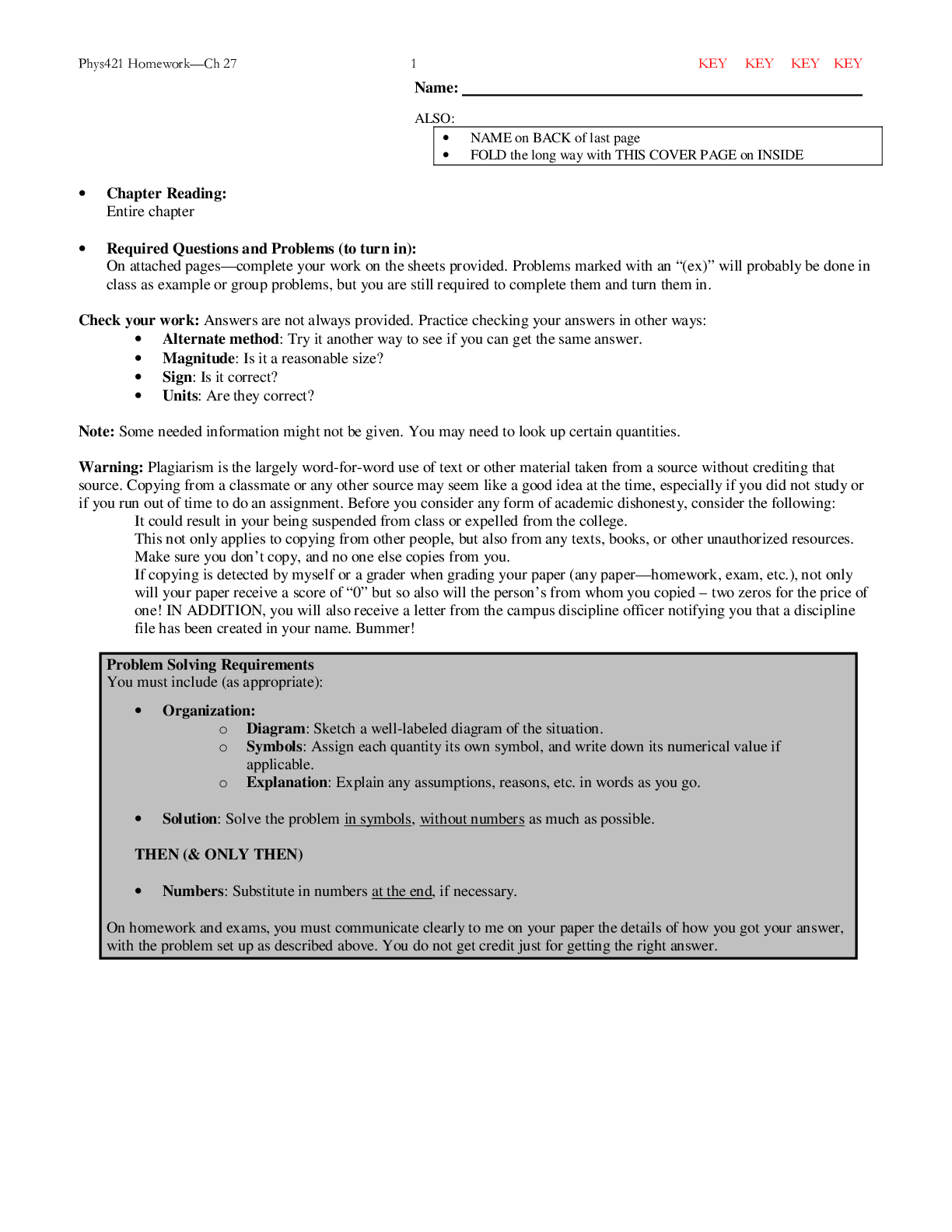
Reviews( 0 )
Document information
Connected school, study & course
About the document
Uploaded On
Apr 02, 2023
Number of pages
10
Written in
Additional information
This document has been written for:
Uploaded
Apr 02, 2023
Downloads
0
Views
53

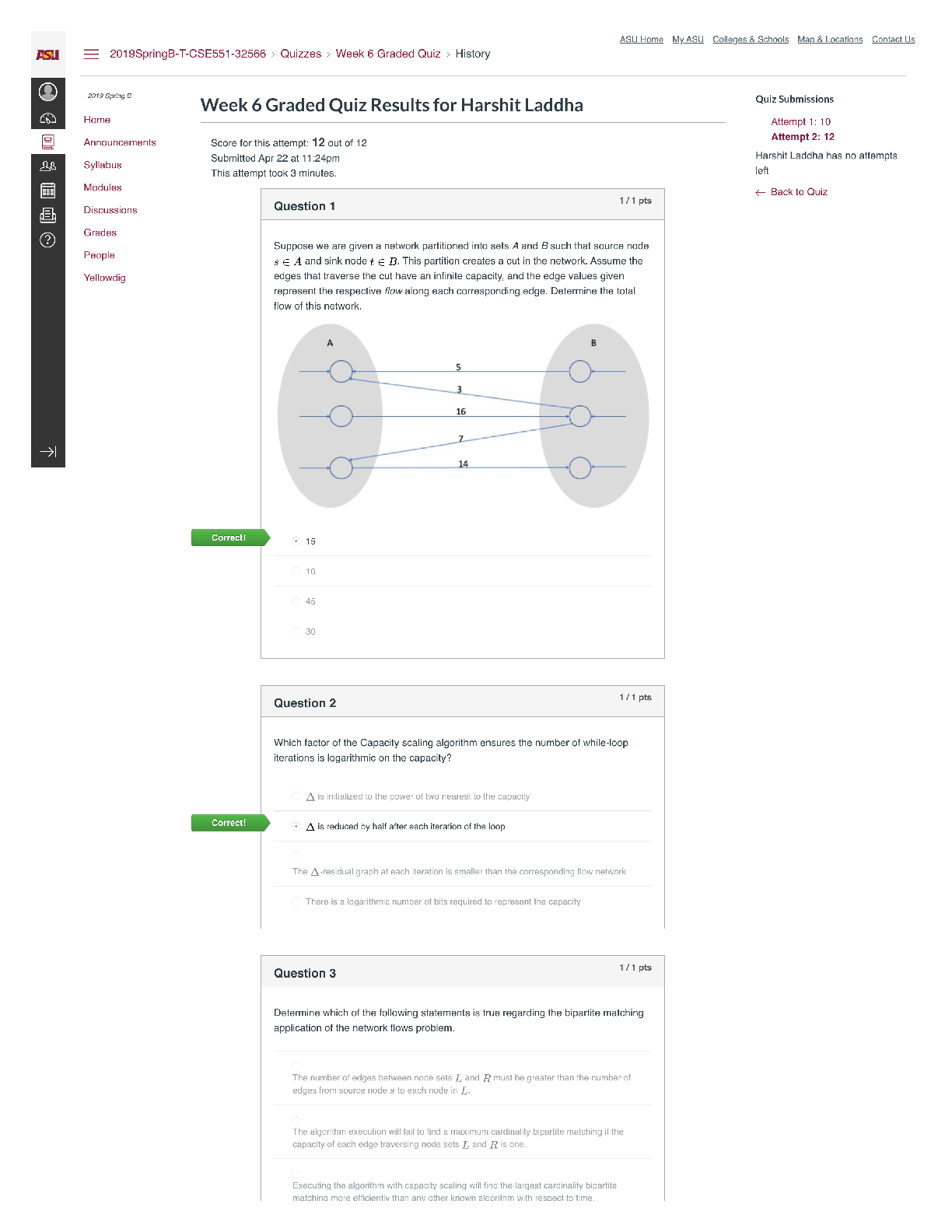

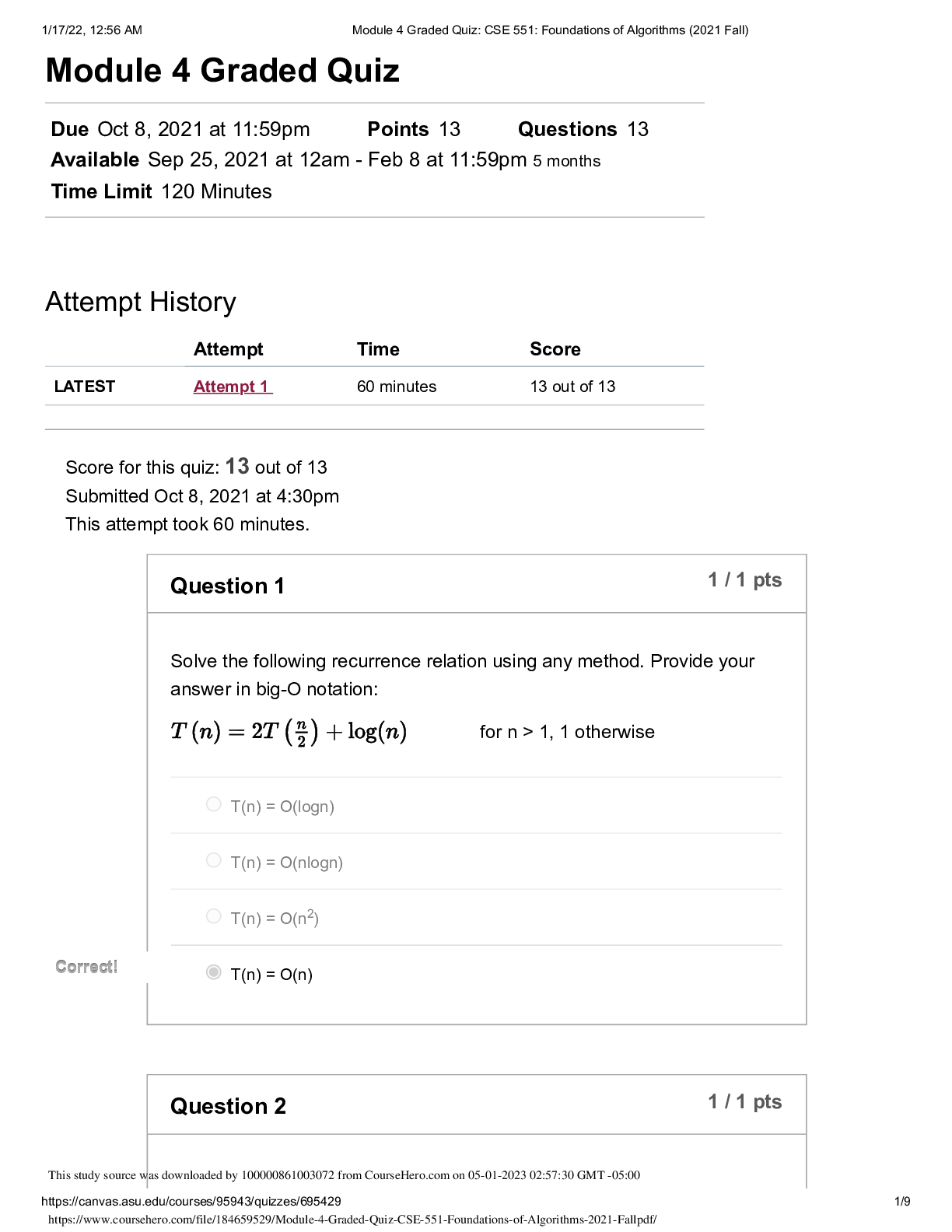
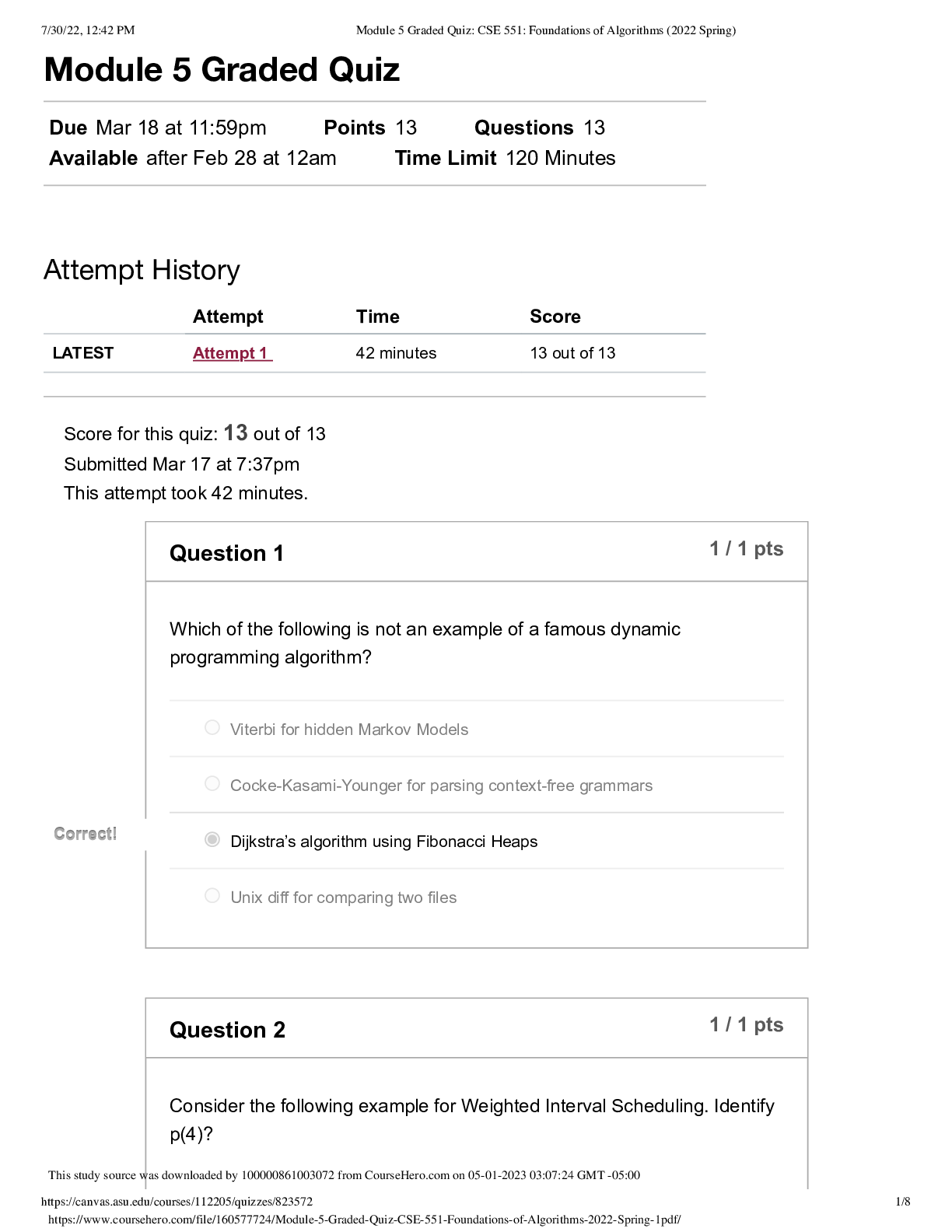
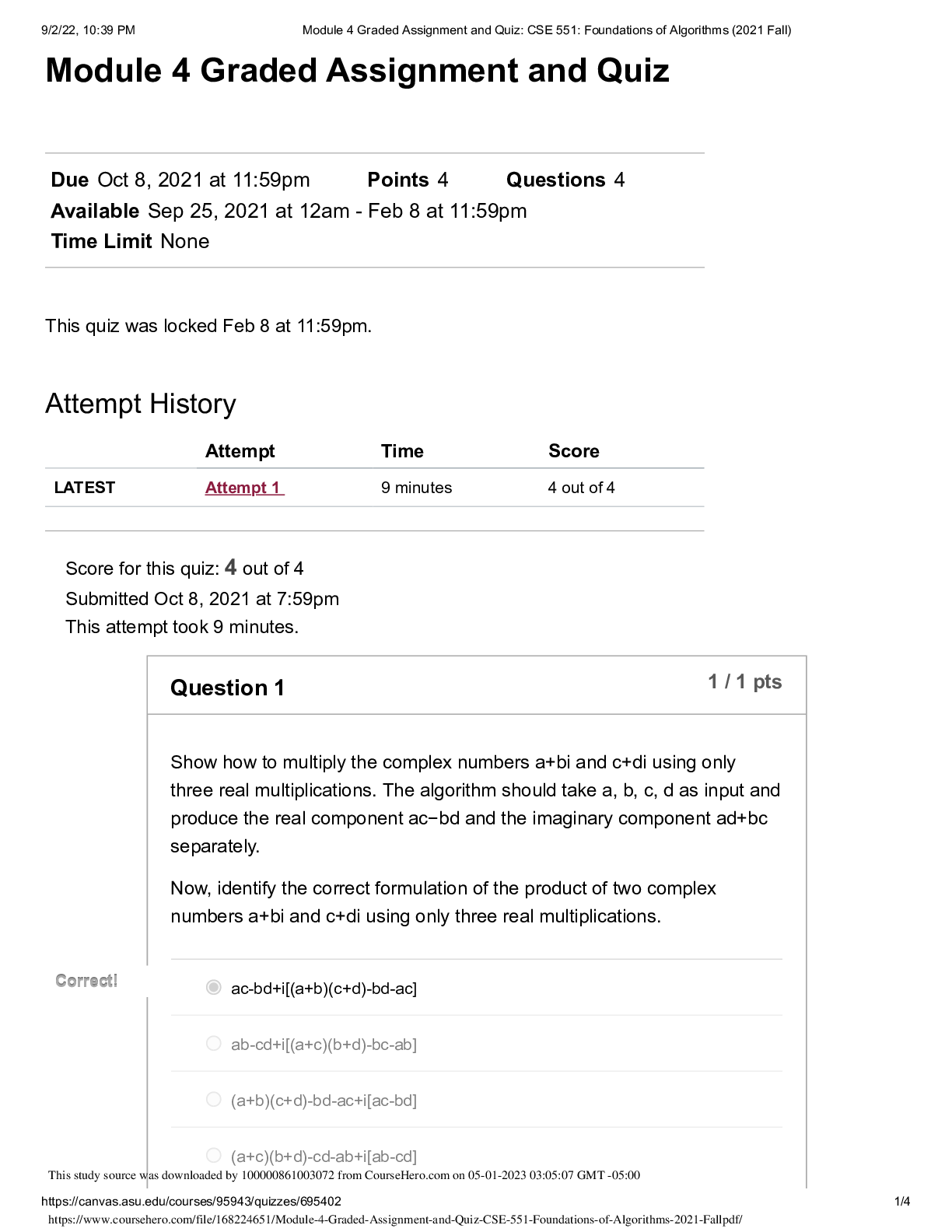
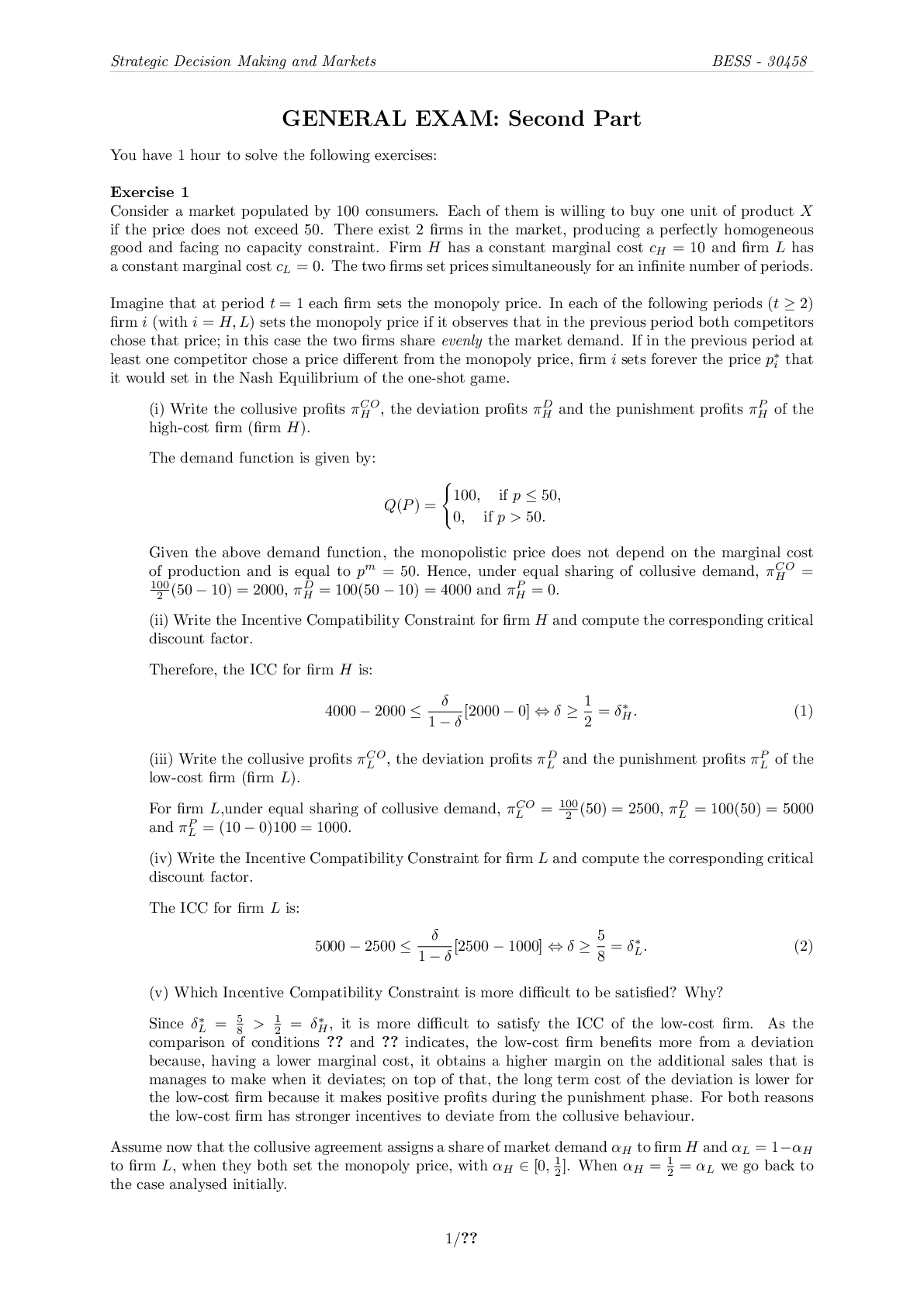

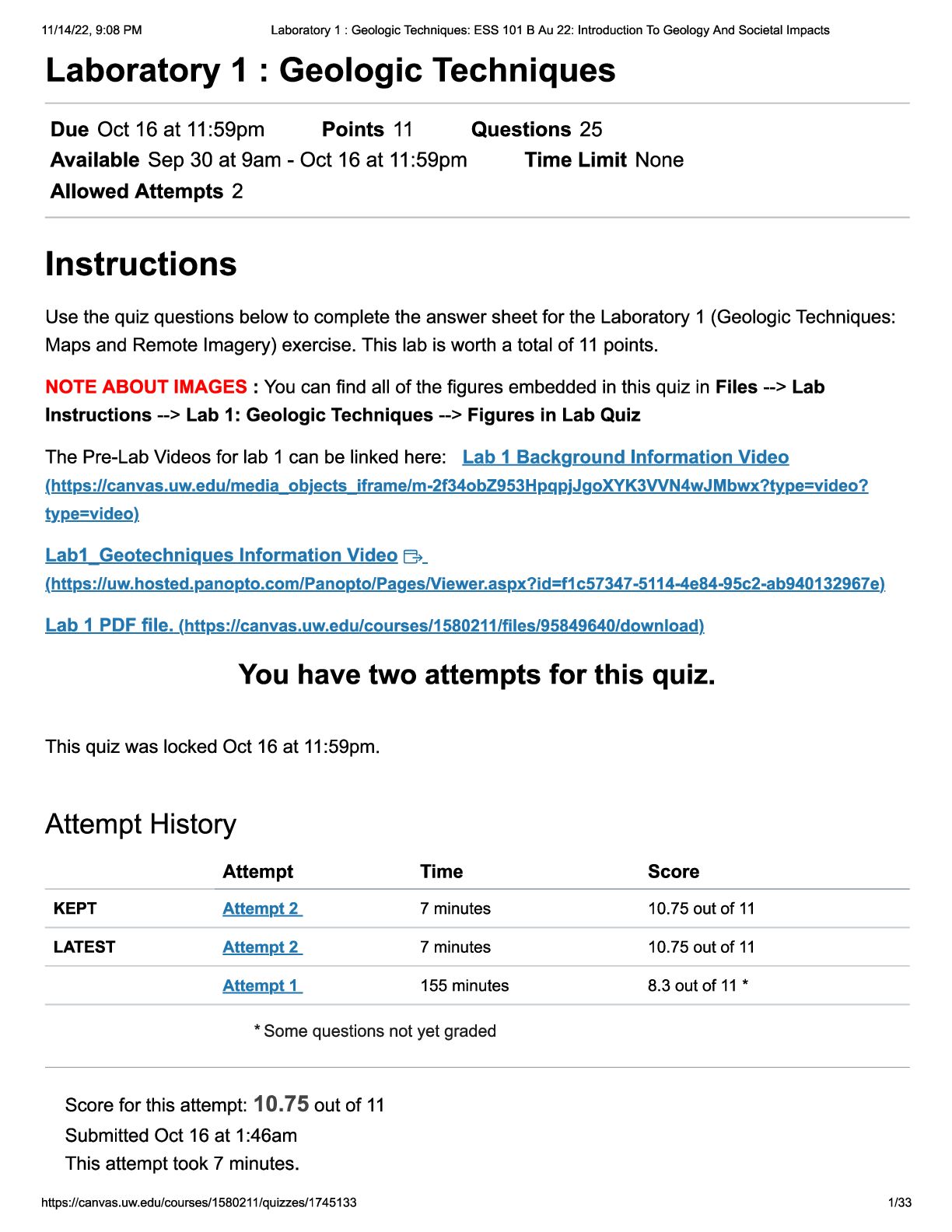

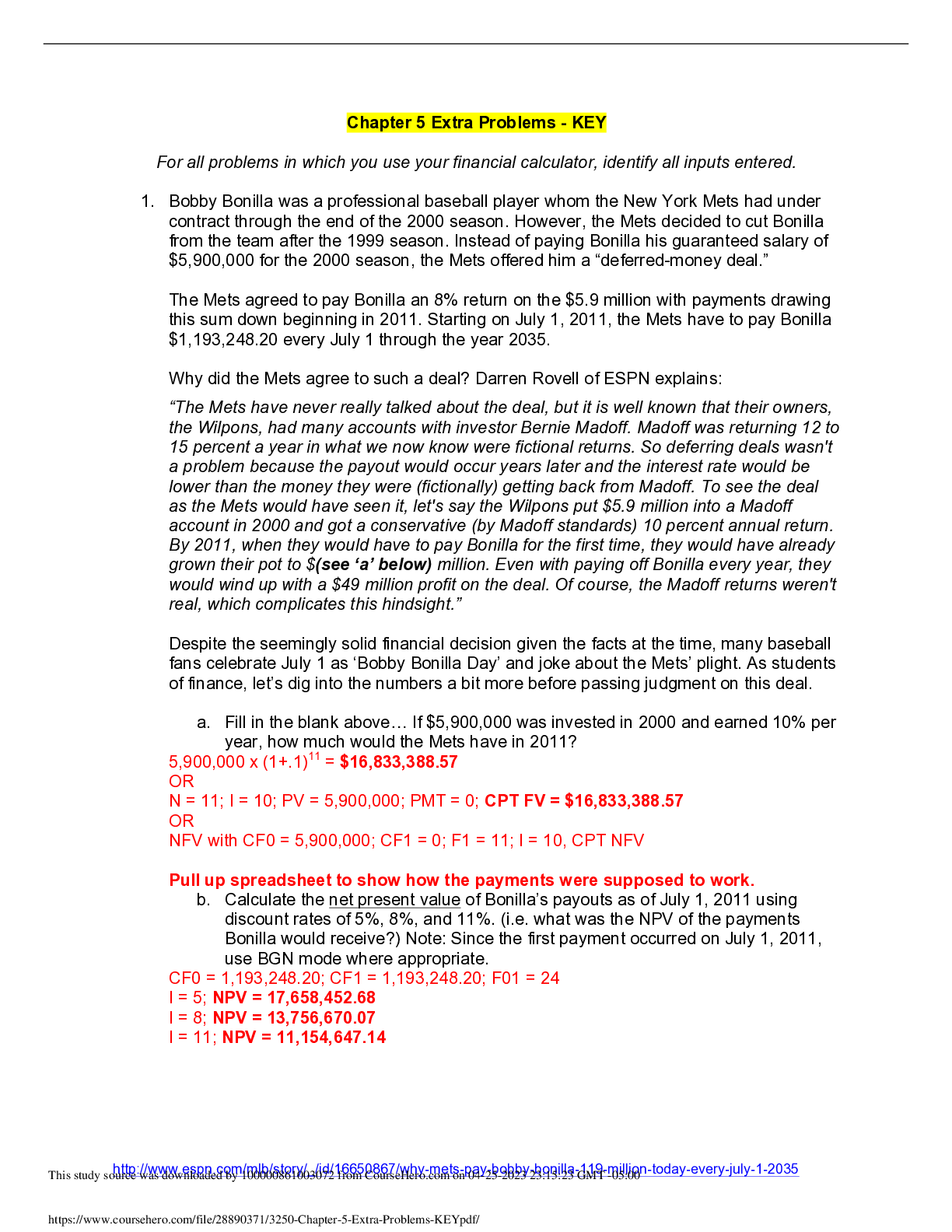




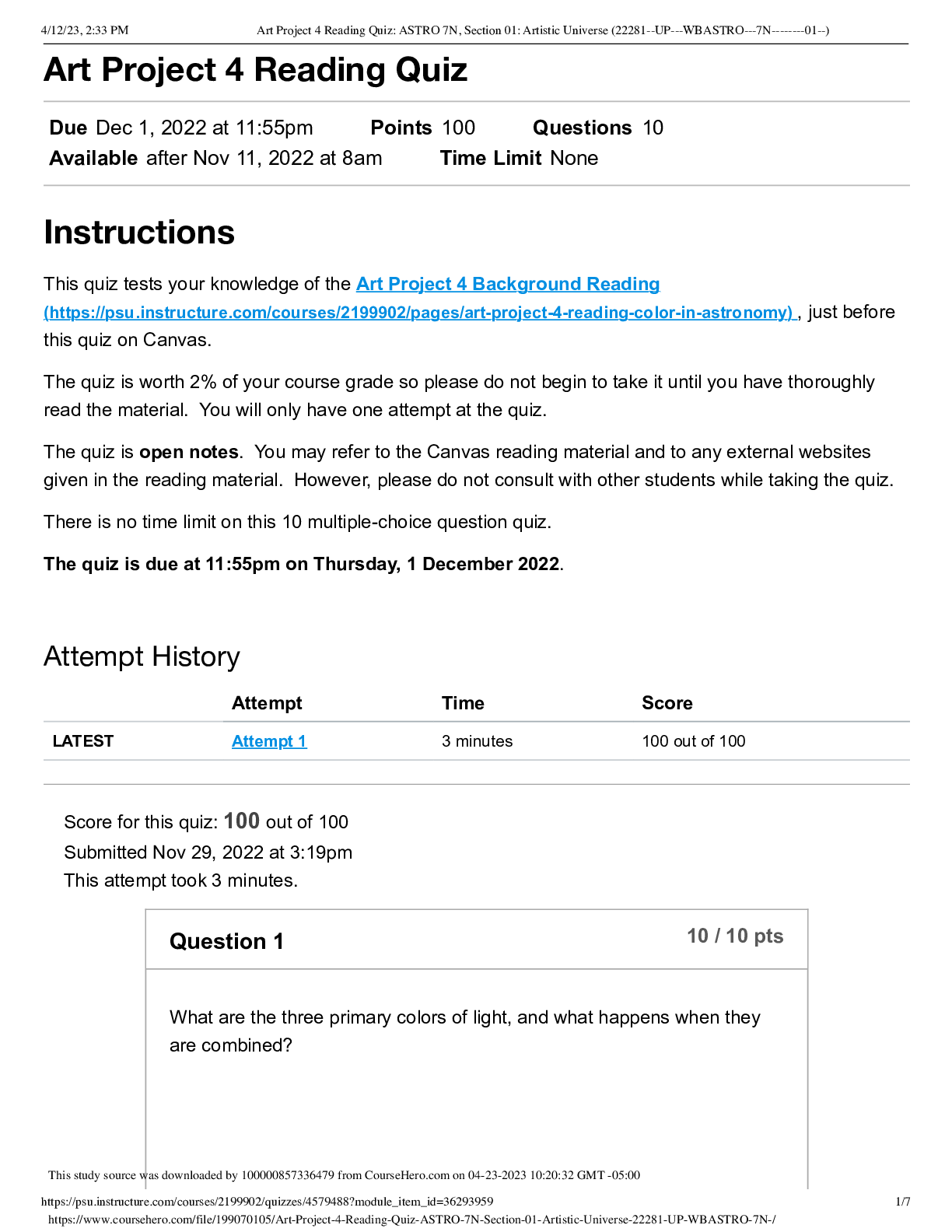
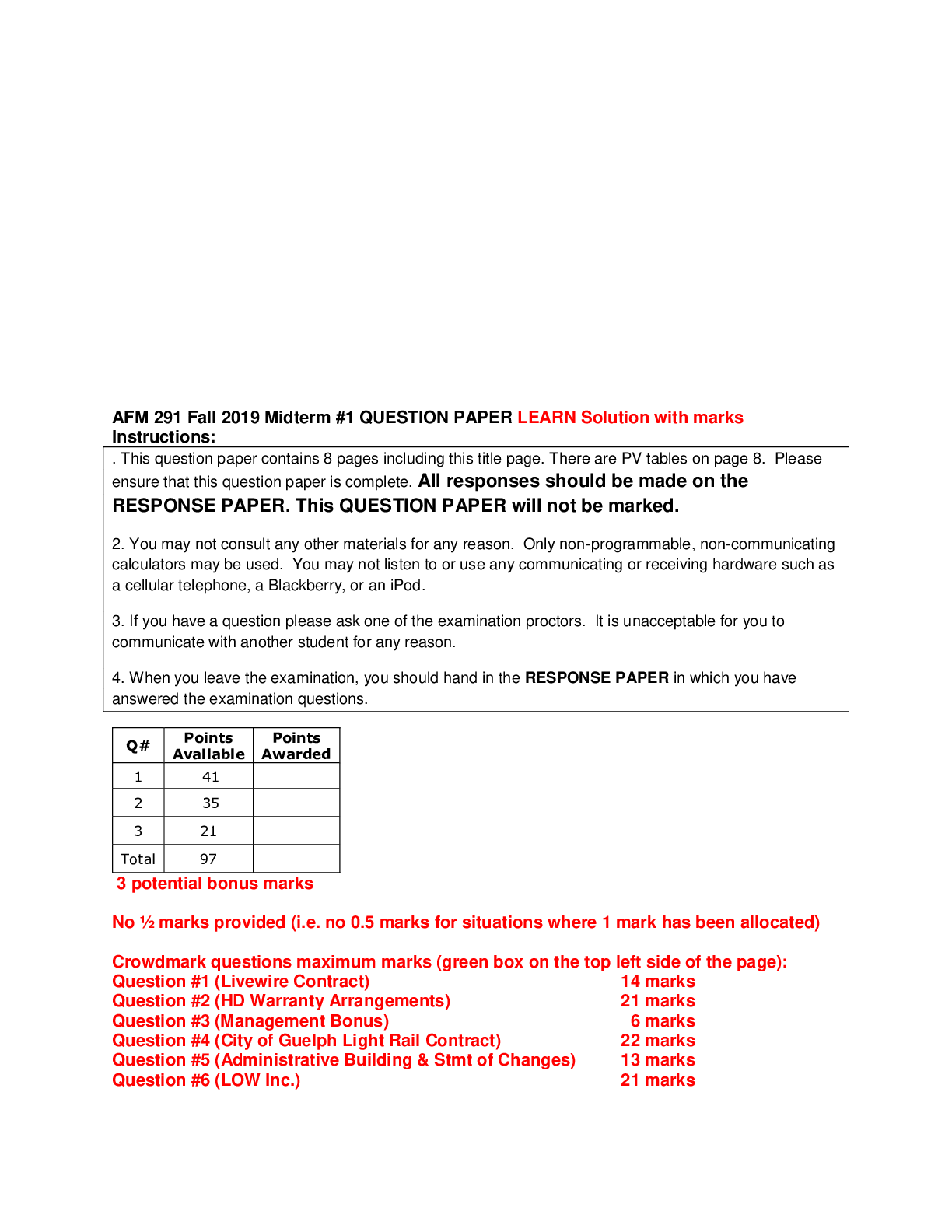


.png)


.png)


.png)


.png)
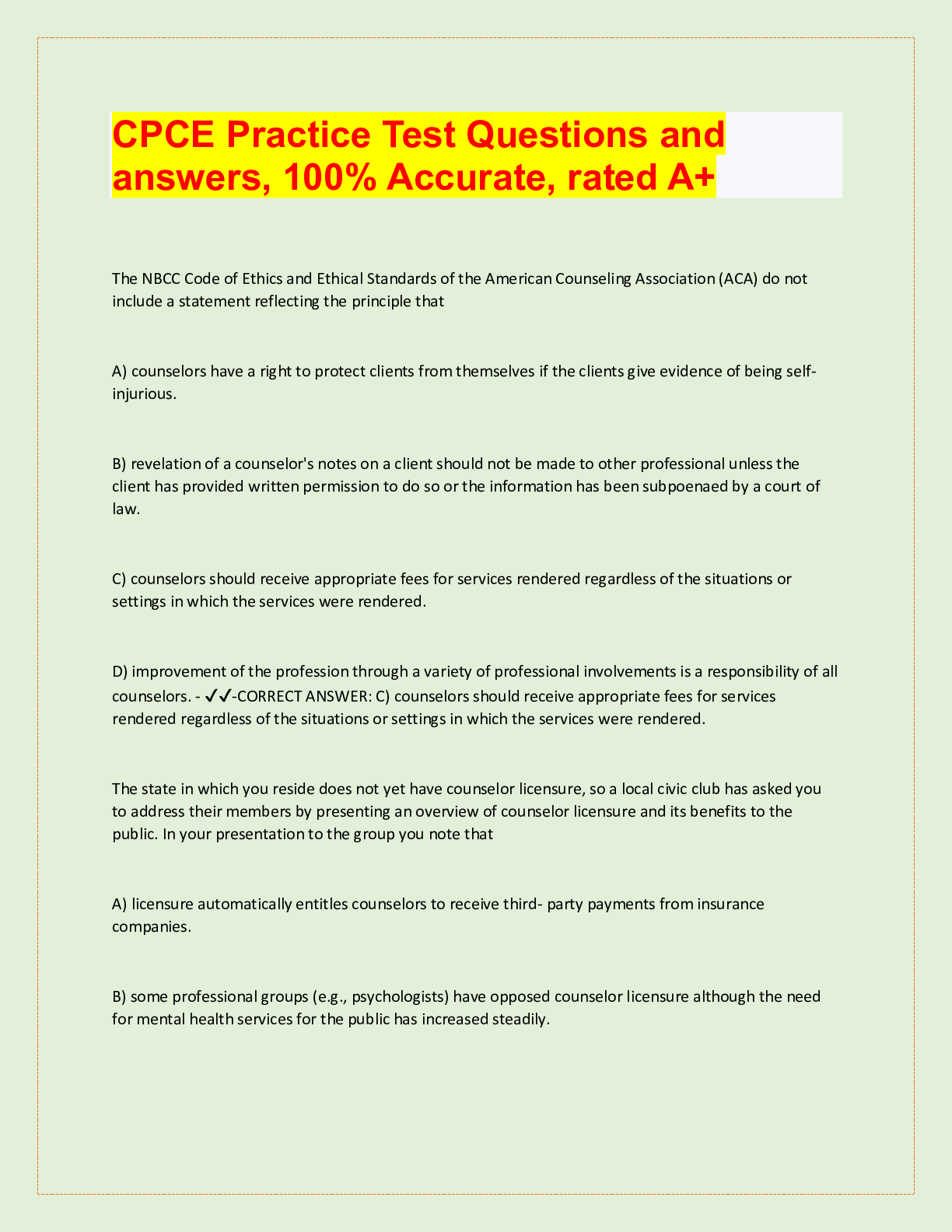
.png)
.png)
.png)


